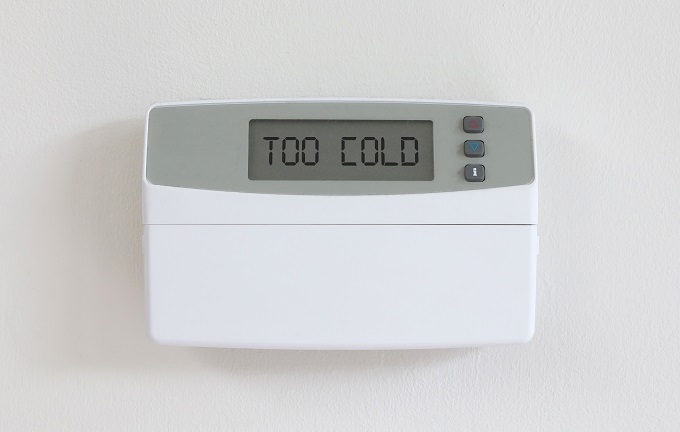
Winter is coming (already)
<h2>We have firmly entered the age of environmental concern, yet we know that temperature control in classrooms is vital to creating a quality learning environment.</h2>
<p>According to the Post Primary Teachers’ Association, 10 degrees Celsius is the lowest acceptable temperature for a teaching classroom.</p>
<p>Experts have also pointed out the importance of room temperature to learning with anywhere higher than 28 degrees often cited as detrimental to concentration. University of the Sunshine Coast School of Education Associate Professor, Michael Nagel has said that studies dating as far back as the 1930s indicate a link between classroom temperature and learning ability.</p>
<p>Nagel claims the human brain is extremely heat sensitive, which directly impacts cognition: “It is significant to note that there is not a great deal of new research in this field as it is widely accepted that heat is bad for cognition and learning and as such new studies aren’t warranted,” he noted.</p>
<p><strong><em>School News</em></strong> journalist Kat Donaghey compiled a few relevant findings from various studies from over the years, and found that:</p>
<ul>
<li>Heat stress dramatically lowers scores in intellectual and physical tasks (Taylor, H.L. and Orlansky, J., 1993).</li>
<li>Reading comprehension declines when the ambient temperature of a room reaches 23 degrees celsius. Math skills decline above 25 degrees celsius (Lackney, J., 1994).</li>
<li>Classrooms kept between 20 and 23 degrees celsius are the most comfortable for students (Harner, D.P., 1974).</li>
</ul>
<p>Still, in a nation such as ours, temperature control is no easy feat. Outdoor temperature, seasonal change and the impact of global warming has made it necessary for schools to purchase and maintain quality heat pumps and air conditioning units.</p>
<p><strong><em>School News</em></strong> spoke with a couple of leaders in this sector to find out what’s available for schools in 2018.</p>
<p><img class="aligncenter size-full wp-image-11681" src="https://www.schoolnews.co.nz/wp-content/uploads/2019/02/cOp7UdYG.jpg" alt="" width="680" height="286" /></p>
<h2><strong><u>Industry insights on what’s available</u></strong></h2>
<p>Derek Miles from Temperzone explained that there are different types of heat pumps, including wall mounts, floor mounts, cassettes, underceiling, in-ceiling ducted, rooftop, single or multi-zone types. “These different types of heat pumps suit different applications, e.g. small/large room, high/low ceiling, and other features worthy of consideration include quietness, air filtration levels, outdoor coil protection, low outdoor temperature performance and room occupancy sensors.”</p>
<p>Jarrad, from HVAC-I told us that custom plans can often be put together based on a school’s needs. “Heat pumps can cater for the tiniest of offices to the largest of halls and there is an option to connect multiple indoor units to one outdoor unit. There are also cassettes installed flush to the ceiling that blow out in four directions, or a floor or underceiling console unit that does not take up much wall space.”</p>
<h3><strong>Guidance on energy efficiency</strong></h3>
<p>Most people are familiar with there being energy rating labels supplied on refrigerators, and heat pumps in showrooms are also required to display energy efficiency information so schools can compare performance between models. Derek added: “Some units include additional energy saving functionality, for example, motion detector to check room occupancy so that when the room is empty, the set temperature drops back to use less energy.”</p>
<p>In terms of optimum temperature guides, Jarrad offered that “21 degrees is a good temperature to use all year round, in summer and winter” as schools can have timers set up to ensure that heat pumps come on and off at the right times. “Another option is installing a wired all controller to operate the heat pump instead of a remote control. This can be set up with restricted access meaning that only a certain range of temperatures can be selected so that it can’t be misused and will operate at the best efficiency.”</p>
<p>Power usage data is often now included on controls but Derek warned that this “requires some analysis to be useful”. If the heat pump is to operate at low outdoor temperatures (less than -10°C) for long periods, then he advises to check out the ‘H2 performance’ before purchase.</p>
<p><img class="aligncenter size-full wp-image-11682" src="https://www.schoolnews.co.nz/wp-content/uploads/2019/02/ASTG09-12KMCB.png" alt="" width="680" height="261" /></p>
<h3><strong>The need to refurbish or replace</strong></h3>
<p>Derek explained: “Older air conditioning units eventually need replacing. A lot of older units used R22 refrigerant which is no longer freely available and is expensive. New air conditioners use R410A or R32 refrigerant, the later of which has a lower global warming potential. Both types are more efficient than their R22 predecessors therefore reducing running costs. Some brands still have spare parts available which can extend the life of your air conditioning system.”</p>
<p>Jarrad agreed that “the latest range of heat pumps use a newer type of refrigerant called R32 which is more energy efficient and better for the environment”.</p>
<p>He added that training and maintenance is a vital way to keep your units working well. Schools should aim to have “a regular service plan that suits the school, which might include existing systems and/or ventilation systems”. He stressed that the on-site facilities manager should be shown how to do basic maintenance: “It can be a simple case of educating the staff on the basics of how best to operate them.”</p>

NZEI Te Riu Roa is considering legal action against the government for the disestablishment of…
NZQA is implementing AI-marking for all Year 10 written assessments from this year onwards, following…
Teaching personal financial responsibility isn't enough. Children should be taught broader economic context, argue New…
When students can't hear the teacher, they can't learn properly. Sound quality matters in education…
The Garden City is rich with learning opportunities, no matter what subject or part of…
Teaching Council of Aotearoa launch school leaders’ stories project with Unteach Racism to challenge institutional…
This website uses cookies.